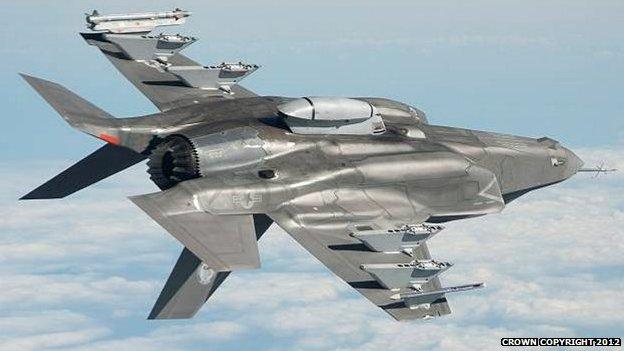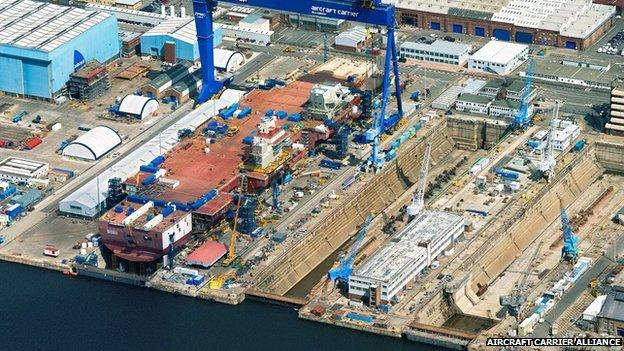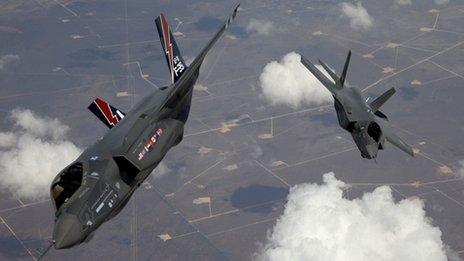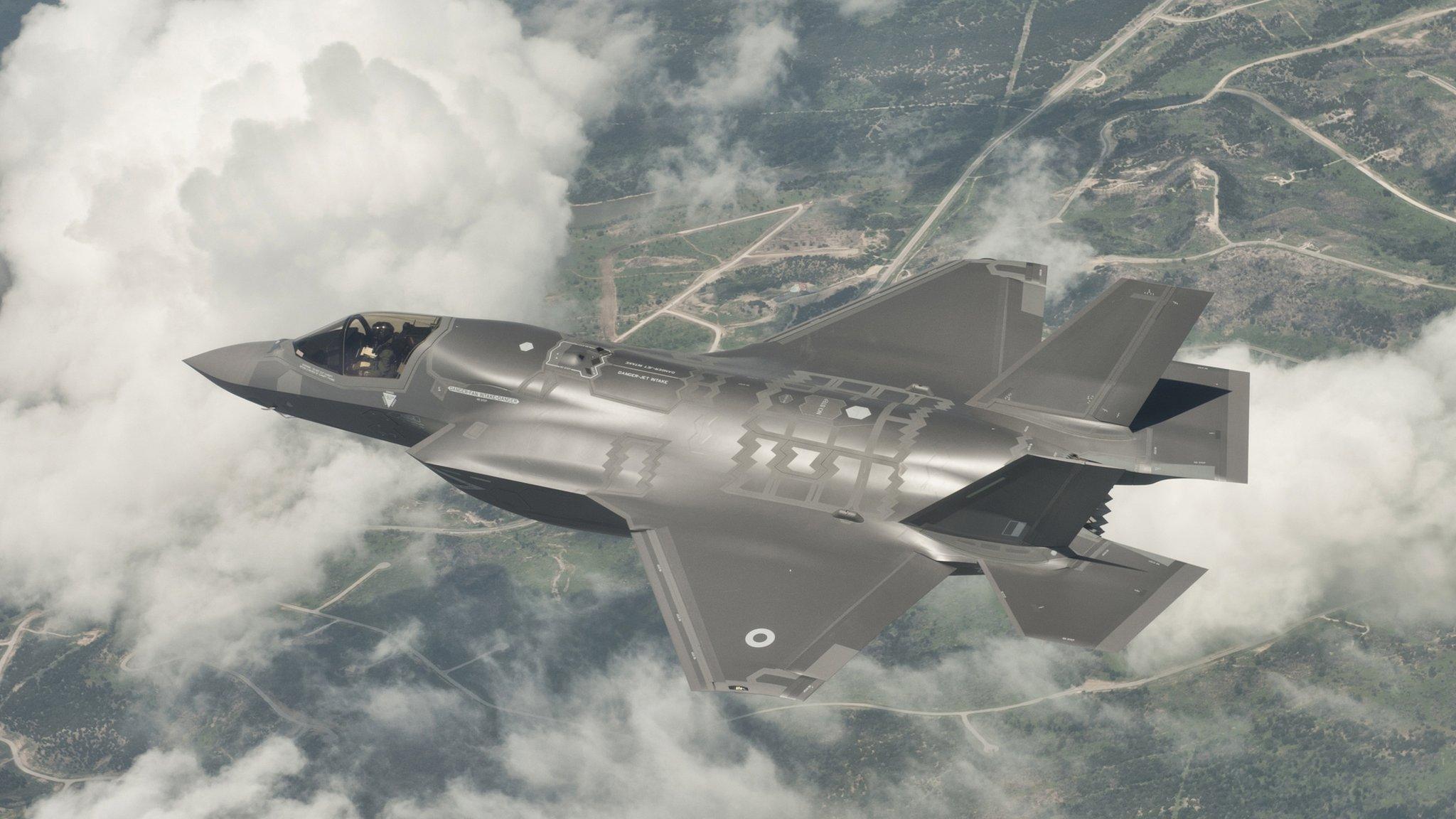UK to spend £2.5bn on F-35 fighters
- Published
The F-35B has the ability to land vertically on aircraft carriers
The UK is about to commit to the F-35 fighter project, a US-led effort to produce 3,000 aircraft which is set to cost more than £600bn globally.
The initial UK order for 14 F-35Bs will, with support costs added, cost about £2.5bn, Newsnight has learned.
Defence Secretary Philip Hammond said the F-35B was an expensive plane, but one with an "incredible capability".
But critics have questioned Ministry of Defence suggestions that the jets will be combat capable by 2018.
The F35-B will be known as Lightning II in UK active service and is going to replace the already retired Harrier.
The aircraft - capable of vertical landing - will eventually be able to fly from new carrier HMS Queen Elizabeth.
The F-35 programme is central to the future of the Royal Navy and the military aerospace sector of the economy, but it has been plagued by development problems, is years late into service and the true cost to the UK is only just becoming clear.

The F-35B will be known as Lightning II when it is in UK service
At one stage, the US Marines had hoped to bring the F-35 into service in 2010, but they now hope to do so late in 2015. Many industry experts say this is hopelessly optimistic.
'Number one risk'
Newsnight has learned that Britain originally intended its F-35s to enter service in 2012.
With 8.4m lines of software, it is by far the most complex fighter ever built, but a Pentagon inspector's report stated that by last summer only 2% of that code was fully up to standard. Much of the plane's software, including that needed to aim and launch weapons, remains to be proven in tests.
Aircraftmaker Lockheed Martin argues that 7.4m lines of the aircraft's software have now been tested, but one senior source familiar with Britain's F-35 programme says continuing software problems are "the number one risk" to the UK bringing it into service on time.
Former Royal Navy chief Admiral Sir Jonathon Band, who now works with Lockheed Martin, believes the new aircraft is vital to maintaining Britain's status as a serious international player.
"By the end of the decade, we are going to have a credible air capability," he said, adding that the Ministry of Defence's original commitment to buying 48 jets "will certainly not be enough".
"My job is to get the aircraft flying from the carriers as quickly as we can"
Worries about risk - financial and technological - have kept the British government from committing to bigger numbers.
Newsnight understands that the first 14 aircraft will be bought for £58m ($96m) apiece. However, once spares, maintenance and initial support are included, the price will be much higher.
'Basic weapons range'
There is concern in the MoD that observers will simply divide the approximate £2.5bn cost of this stage of the project by the 14 planes being ordered, whereas this price tag includes certain support costs for the entire, eventual UK fleet.
One Pentagon estimate last year for an aircraft plus support costs for the first few years came out at £154m ($253m) each.
In planning its own buy, Britain has shown a little more caution than the hard-charging US Marine Corps.
It's planned that the 14 aircraft will form the first operational squadron in 2018, and that by 2020 they will be able to fly from HMS Queen Elizabeth.
Justin Bronk, an analyst at the Royal United Services Institute, said that even by then, they might be capable only of "going through the motions" - taking off and landing - and not using the more advanced weapons in the RAF inventory.

Work on HMS Queen Elizabeth has been taking place at Babcock's Rosyth dockyard
People in the MoD say they are confident the aircraft will be "combat capable", with a basic range of bombs and missiles, by 2018, although they concede that getting some of the RAF's more advanced missiles to work with the F-35 will not happen before 2022.
However, others in the industry have suggested that 2025 might be a more realistic date for full combat capability, and that funding to "integrate" some of these weapons with the F-35 could come under threat at some future point.
'Air force backbone'
Mr Hammond said: "[The F-35] will be the world's most sophisticated fighter aircraft with a high level of stealth capability, so it will be able to penetrate enemy defences with very little radar signature, which makes it a very versatile and capable piece of equipment.
"And it will provide a backbone to our air forces, including our carrier power projection for many years to come."
He added of the software issues: "It would be a mistake to think of this as a software that will be completely written when the aircraft comes into service.
"There will be updates of software throughout the life of these aircraft, adding capability as well as dealing with any specific issues that arise when the aircraft is in use."
Watch Mark Urban's Newsnight film in full
- Published11 February 2014
- Published5 February 2013

- Published20 July 2012

- Published10 May 2012
